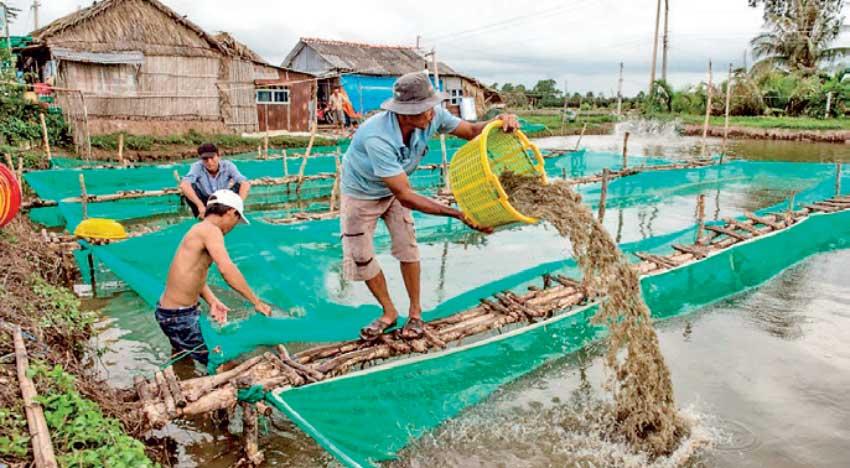30 Jul 2022 - {{hitsCtrl.values.hits}}

The Agriculture Sector Modernisation Project (ASMP) has stepped up efforts to transform Sri Lanka’s shrimp farming industry to become a key source for foreign exchange, so that the ongoing shortage can be addressed.
After the ‘white spot’ disease had decimated Sri Lanka’s fledgling shrimp farming industry in early 2000s, the Sri Lanka Aquaculture Development Alliance had requested for a grant from the ASMP Value Chain Development Programme to develop the shrimp industry in Sri Lanka together with the relevant private and government stakeholders.
Responding to the request, the ASMP has formulated a model to adopt best management practices for a sustainable shrimp farming industry. The focused locations are in the Puttalam and Batticaloa districts.
The main areas focused by the ASMP to support the shrimp industry are: to address common sector issues for sustainable shrimp culture, to establish bio security measures of farms and hatcheries, to upgrade shrimp hatcheries to B+ grade (hatchery grading standards introduced by NAQDA) to produce high-quality post larvae (PLs), to resume production after disease, to introduce specific pathogen free (SPF) shrimp variety ‘Penaeus monodon’ (the giant tiger prawn), which prevents vertical transmission of the virus, to strengthen technology transformation, to create linkages among small shrimp farmers, processors and exporters, to align with national strategies of NAQDA (nauplii centres and nurseries) and to increase foreign exchange to the country through shrimp exports.
Accordingly, high-density and super high-density SPF Nauplii centres were developed under large-scale projects. The first centre in Sri Lanka was established with polychaeta production with support of the ASMP. This project boosted the investments and enabled the companies to invest in large-scale projects in shrimp hatcheries, which could not have been possible for another 10 years. This facility can produce 10 million nauplii per day.
The ASMP shared the risks in investing for large-scale projects with higher returns by encouraging investments between Rs.100 million to Rs.400 million.
Simultaneously, hatcheries were developed to grow the SPF Nauplii brood stock. Poly kit feed was also developed thus. The shrimp sector value chain’s primary needs were holistically addressed with the ASMP grant scheme.
As part of the project, a shrimp processing factory was set up in order to ensure the continuous supply of shrimps for the international market. The establishment has the capacity to process 20 MT per day and also caters to the storing and blast freezing of shrimps for the export market.
08 Nov 2024 2 hours ago
08 Nov 2024 4 hours ago
07 Nov 2024 8 hours ago
07 Nov 2024 9 hours ago
07 Nov 2024 07 Nov 2024